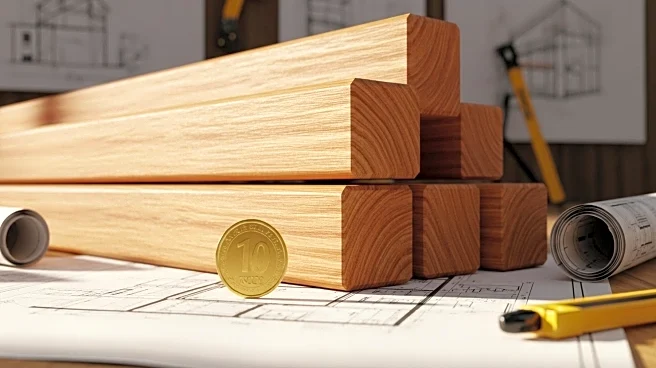What's Happening?
The mass timber construction industry is encountering significant challenges related to labor shortages and financial volatility. Mass timber requires specialized skills, such as 3D modeling and CNC operation, which are currently in short supply. Unlike traditional construction materials like concrete and steel, mass timber lacks established pricing systems, leading to unpredictable costs. This volatility can stall projects and affect budgets. Additionally, the industry faces high insurance costs and a lack of standardized regulatory frameworks, which can deter investment and development.
Why It's Important?
Mass timber construction offers potential benefits, including faster build times, reduced labor costs, and lower carbon emissions. These advantages align with broader goals of addressing housing shortages and climate change. However, the industry's growth is hindered by structural barriers that require coordinated efforts from government, industry, and educational institutions. Developing a skilled workforce and creating financial tools to manage cost volatility are crucial for scaling mass timber construction. Successfully addressing these challenges could position mass timber as a key player in sustainable building practices.
What's Next?
To overcome these challenges, stakeholders in the mass timber industry may need to implement national training programs to develop a skilled workforce. Financial innovation, such as new pricing mechanisms and insurance models, could help stabilize costs and attract investment. Collaboration between industry, government, and educational institutions will be essential to create a supportive environment for mass timber construction. If these efforts are successful, mass timber could become a leading solution for sustainable construction, contributing to economic growth and environmental goals.












